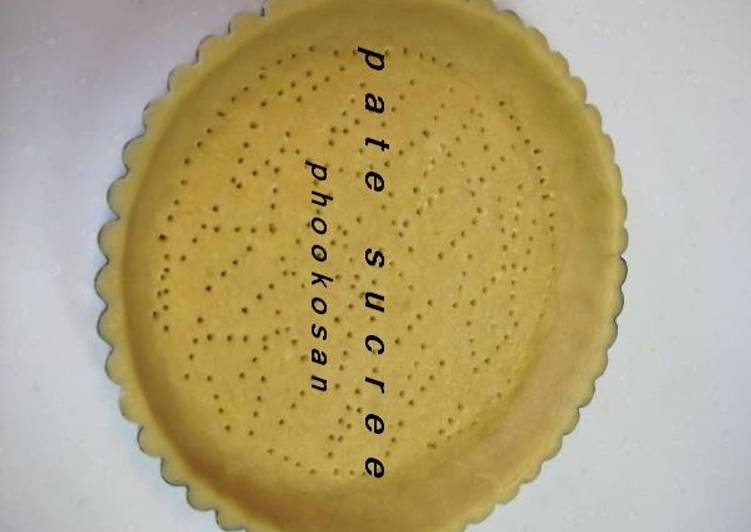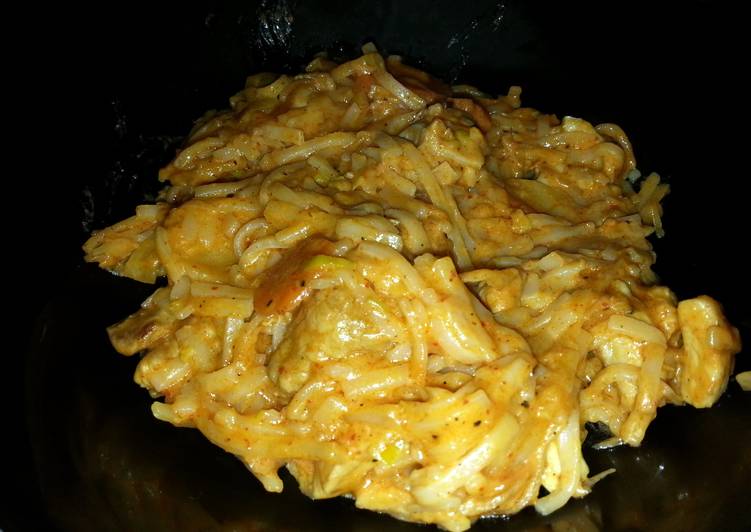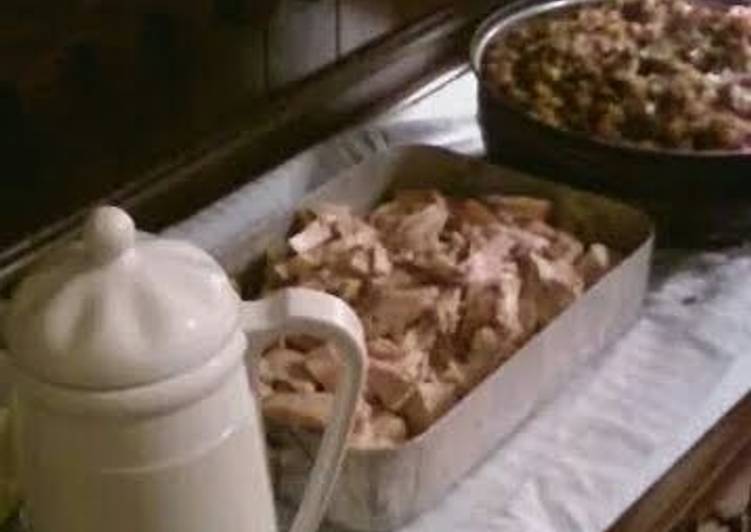
Hello everybody, hope you are having an incredible day today. Today, I will show you a way to make a distinctive dish, basic flaky crumbly tart crust - pâte à sucre. One of my favorites. This time, I am going to make it a little bit unique. This is gonna smell and look delicious.
Basic Flaky Crumbly Tart Crust - Pâte à Sucre is one of the most well liked of current trending foods in the world. It is simple, it’s quick, it tastes yummy. It’s appreciated by millions every day. Basic Flaky Crumbly Tart Crust - Pâte à Sucre is something which I have loved my entire life. They’re fine and they look wonderful.
To begin with this particular recipe, we must prepare a few ingredients. You can have basic flaky crumbly tart crust - pâte à sucre using 7 ingredients and 35 steps. Here is how you can achieve that.
The ingredients needed to make Basic Flaky Crumbly Tart Crust - Pâte à Sucre:
- Get 75 grams Unsalted cultured butter (or regular unsalted butter)
- Make ready 1 pinch Salt
- Prepare 45 grams Powdered sugar
- Take 10 grams Trehalose
- Get 1 Egg yolk
- Make ready 110 grams Cake flour
- Make ready 25 grams Almond flour
Instructions to make Basic Flaky Crumbly Tart Crust - Pâte à Sucre:
- Return the butter and egg to room temperature. Sift the floury ingredients. The butter should be soft enough that your finger sinks right into it.
- Put the butter and salt in a bowl and cream together. Hold the whisk vertically and turn it slowly so that you don't incorporate too much air.
- Sift in the powdered sugar and trehalose in two batches. Cream it into the butter in the same way as in Step 2.
- Sift in the almond flour and mix in the same way until the combination is pale colored.
- Add the egg yolk and mix it in slowly, until the combination is the consistency of cream.
- If it looks like this photo, it's good.
- Change to a rubber spatula, and sift 1/2 the cake flour into the bowl. Mix up from the bottom in a cut-and-fold motion.
- While the mixture is still floury, add the rest of the cake flour and fold it in in the same way. When the flouriness is gone, fold the dough into one mass.
- Be sure not to over-knead the dough. You just need to fold it over 2 to 3 times after it's no longer floury.
- Cover tightly in plastic wrap or in a plastic bag. Form into a round flat ball. Let it rest in the refrigerator overnight.
- Roll the dough out between two sheets of plastic wrap.
- If the dough is too cold and hard and you try to forcibly roll it out it may break. Leave it to soften up a bit before rolling out in that case. If the dough is too soft though it is hard to form properly.
- Roll the dough out so it's rather larger than the tart pan. If the dough gets too soft while you are working with it, chill it again in the refrigerator before proceeding.
- Peel off the upper plastic wrap, and invert the dough onto the tart pan. Peel off the other plastic wrap.
- Push the dough into the pan while the edges hang over the sides. Make sure the dough is stuck securely to the bottom. Press it gently into the sides too.
- Make sure the dough is pushed well into the corners too. Roll the rolling pin over the pan to cut off the excess dough, and press in the sides again.
- Use a thick-tined fork to make lots of holes in the bottom of the crust. To prevent the crust from shrinking while it bakes, chill it at this point in the refrigerator for 1 hour.
- If you are using a filling with a lot of moisture, don't make the holes.
- To blind bake the crust, press in a piece of kitchen parchment paper and fill with pie weights. Preheat the oven to 180°C, lower to 170°C and bake the crust for 30 to 40 minutes.
- Please adjust the baking time depending on your own. Start checking after 30 minutes, and if it's still pale, bake some more. If it's already golden brown around the edges, it's done.
- When you check the crust for doneness, if it's still too pale, try taking the paper and weights out to finish baking.
- When the crust is baked, cool it on a rack for a little while before taking the weights out. Leave to cool in the tart pan.
- I forgot to put any weights in this time and added them in a hurry later, but it was too late…the bottom of the crust had already risen up a bit.
- Here I baked the crust with the weights in. It didn't puff up and the shape is nice and sharp. The edges are higher than the sides of the pan too!
- For fresh fruit tarts and other high-moisture fillings, brush the inside of the tart evenly with some beaten egg. You can use the leftover egg white for this!
- Bake the crust after brushing with egg for about 5 minutes in a 140°C oven to dry it out. The egg forms a film that prevents moisture from seeping into the crust!
- For half-baked tarts or tarts that are baked without pre-baking the crust, refer to the recipe you are using for the precise temperatures and times.
- The dough is subtly sweet and delicious as cookies too, so if you are going to fill the tart with a very sweet filling, you may want to reduce the powdered sugar.
- I make cookies with the leftover dough. When I tried cutting it out with a 3 cm small heart shaped cutter I was able to make quite a lot. You could give them as a gift with the tart as a bonus.
- This recipe works for 18 cm to 20 cm diameter tart crusts.
- When I baked a 20 cm diameter crust, I had just enough left over to make 5 cookies like this.
- Here's an example of a recipe that uses this tart crust: Raspberry Berry Berry No-bake Cheesecake Tart.
- In small tart tins. Three-berry Cheesecake Petit Tarts.
- Blind-bake halfway and use it for this. Cherry Almond Crumble Tart.
- Peach Custard Tarts, made in five 9 cm diameter tart tins.
So that is going to wrap this up for this exceptional food basic flaky crumbly tart crust - pâte à sucre recipe. Thank you very much for reading. I am sure that you can make this at home. There is gonna be interesting food in home recipes coming up. Don’t forget to save this page on your browser, and share it to your family, friends and colleague. Thank you for reading. Go on get cooking!


